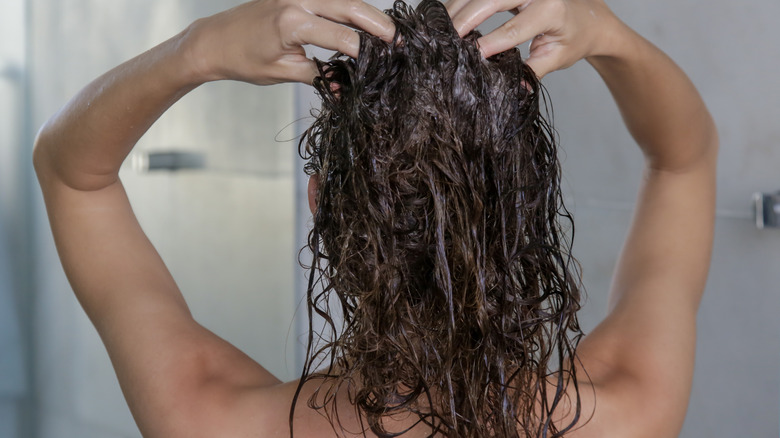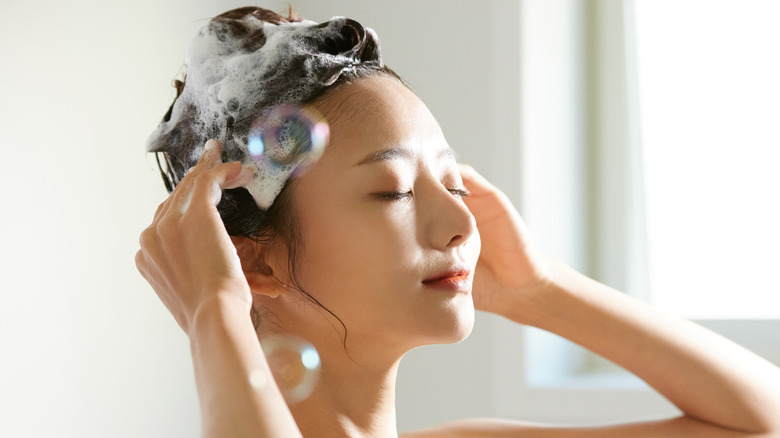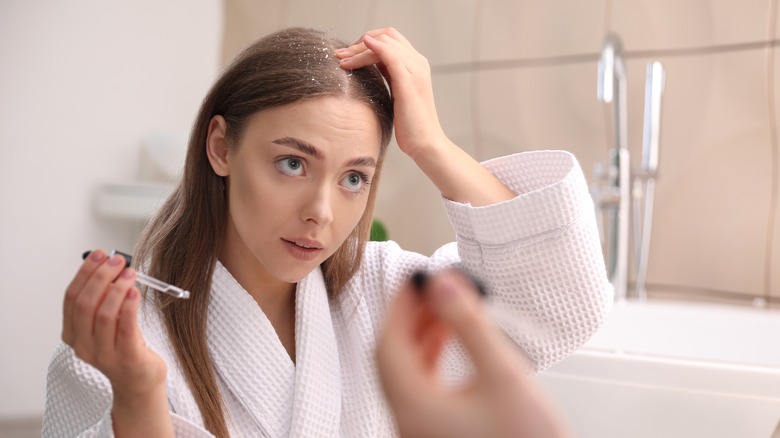Are You Applying Your Scalp Scrub Correctly? Here's How To Use The Detoxing Treatment
Anyone with oily hair knows the pain of having recently washed it dutifully, only for it to turn greasy in hours. While naturally oily hair is primarily due to genetics, it can be heightened with a lack of hair care. Like our skin, leaving your hair untreated will only cause more problems. For those with oily hair, cleaning and detoxing frequently is the best way to avoid the extra grease. Apart from regular shampoo and conditioner, you'll want to keep your scalp clean to prevent buildup. When your scalp contains product buildup, it's more difficult for your hair to thrive. The clogged follicles play a role in the greasy appearance of your hair.
Overall, there are plenty of reasons why you need to include a scalp scrub in your hair routine. Apart from clearing your scalp of buildup, it can stimulate hair growth and reduce inflammation and irritation. The buildup causes your hair to become itchy and irritated, making it crucial to clear it out. Massaging the scalp scrub thoroughly will help clear dead skin cells, dirt, and dandruff, giving the roots a clear path to grow. Massaging the rough texture will kickstart your follicles to help your hair grow longer and quicker. However, applying your scalp scrub correctly is the only way to get these benefits. Whether you have thin or thick hair, there's a strategy behind using a scrub to get the best results.
How to use your scalp scrub
Getting close to your scalp is vital to ensuring you get the best possible results with your scalp scrub. While some scalp scrubs require you to apply it to dry hair, most of the time, you'll need to use it on wet hair. Once you've jumped into the shower, wet your entire hair and moisten the scalp as much as possible. After wetting it, rub the scalp scrub in circular motions around the scalp — target every part of your scalp, even the areas that may not feel as itchy or greasy. Spots behind your ears and towards the neck should also get targeted, as they can accumulate buildup.
You may rinse it out once you feel you've got the entire scalp. Spend time rinsing out the scrub to ensure none is leftover. Run your fingers through your hair to double-check that your scalp is scrub-free, and you may continue your shower routine with a shampoo product. Certain scrub products may double as shampoo. In this case, skip to your conditioner after your scrub.
While scalp scrubs are great for detoxifying your hair, you want not to overdo it, either. Because chemical exfoliants contain ingredients like AHAs and BHAs, it's easy to damage your hair when you overdo it. Over-exfoliating your scalp can lead to dryness, which will over-produce oil once more. Stick to once every one to two weeks to prevent irritating the scalp.
Detoxing your scalp
Your scalp is like the rest of your skin; you want to care for it as much as possible to prevent further hair issues. Since your scalp is where the root of your hair lies, it's directly responsible for growing healthy hair. Besides using a scalp scrub, there are other ways you can detoxify your scalp to help create a healthy base for your hair. Holland & Barrett recommends using hair oil treatments and pre-shampoo products for your weekly or monthly hair routine. Like scalp scrubs, these products will give your scalp an intense cleanse, bringing out any product buildup or oil that you may have missed.
Get into the habit of giving your scalp a regular massage. A gentle message doesn't require more than a few minutes and can quickly be done between shower steps. Giving your scalp this extra boost will help the blood to flow constantly into the area, creating healthy and longer hair. Avoid using too many products simultaneously, which can build up and block your hair follicles. If you are using products, try to limit the number of products you use directly on your scalp. While some products like dry shampoo are used in this area, others like a leave-in conditioner and hair oils should remain on the strands only. Avoiding these areas will help create less buildup over time, meaning less work needs to be done.


